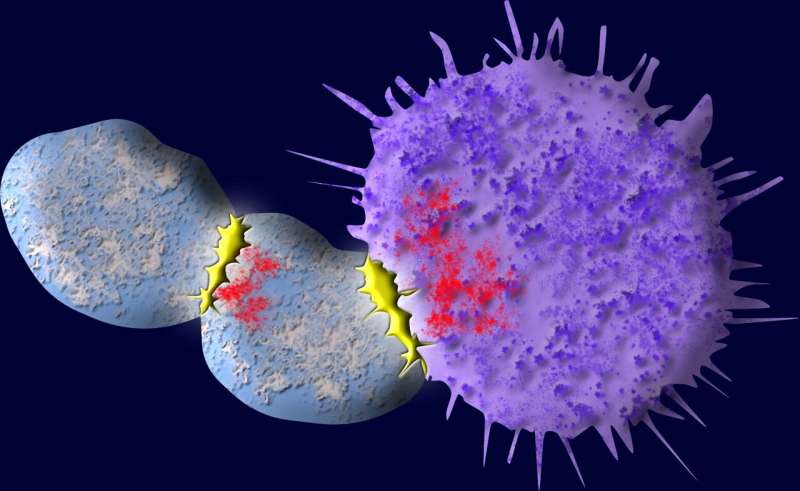This article has been reviewed according to Science X's editorial process and policies. Editors have highlighted the following attributes while ensuring the content's credibility:
fact-checked
peer-reviewed publication
trusted source
proofread
Tail spin: Study reveals new way to reduce friendly fire in cell therapy

In a promising form of immunotherapy known as CAR T-cell (chimeric antigen receptor) therapy, the patient's T cells are engineered to better recognize and attack antigens on the surface of cancer cells. In treatments currently approved for use in battling lymphoma and leukemia; however, the therapy has a drawback: Amidst the cancer-killing frenzy, many engineered T cells become tainted with the remnants of cancer antigens, which causes them to turn on other T cells.
This eventually depletes the body of cancer-fighting cells and opens the door for a recurrence of cancer.
A new Yale study, however, has identified a way to tame the self-destructive tendencies of these killer T cells. Simply fusing a molecular tail onto the engineered T cells used in therapy, researchers say, can inhibit their proclivity to attack each other. The study was published in the journal Nature Immunology.
"It's like putting a sword back in the sheath after it has done its work," said Sidi Chen, associate professor of genetics at Yale School of Medicine and senior author of the study.
For the study, the Yale team—which was led by co-first authors Xiaoyu Zhou and Hanbing Cao—fused CTLA-4 cytoplasmic tails (CCTs) to engineered CAR T cells. CCTs are a portion of a naturally occurring human protein, known as CTLA-4, which is known to keep the immune system in check by regulating T cells. Researchers observed that the cells fused with these tails were less exhausted and survived longer than CAR T cells without the tails.
"The CAR T cells with the engineered tails were less reactive but more persistent" in killing cancer cells, said Zhou, a postdoctoral associate in Chen's lab.
Chen says it would be relatively easy for existing companies to fuse CCTs to CAR T cells, and that improvements in therapy might help expand treatments to solid tumors as well.
More information: Zhou, X. et al. CTLA-4 tail fusion enhances CAR-T antitumor immunity, Nature Immunology (2023). DOI: 10.1038/s41590-023-01571-5. www.nature.com/articles/s41590-023-01571-5



















